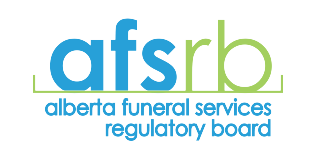Burial Services
Traditionally, a burial service involves a visitation and is followed by a funeral service. While the casket is typically present at both these events, it is your decision whether to have the casket open. You then have a number of options for interment. Decisions also need to be made on whether the body needs to be embalmed, what kind of casket to use, what cemetery to use, and what to put on the gravestone.
Cemetery Types
Traditional cemetery: A traditional cemetery is the most common style of cemetery where headstones or other monuments made of marble or granite rise vertically above the ground. There are countless different types of designs for headstones, ranging from very simple, to large and complex.
Columbarium: Columbarium walls are generally reserved for cremated remains. While cremated remains can be kept at home by families, or scattered somewhere significant to the deceased, a columbarium provides friends and family a place to come to visit. Columbarium walls do not take up a lot of space and may be a cheaper alternative to a burial plot.
Natural cemeteries: Natural cemeteries, also known as eco-cemeteries or green cemeteries, are a new style of cemetery set aside for natural burials. Natural burials are motivated by the desire to be environmentally conscious. While natural burials can be performed at any type of cemetery, they are usually done in a natural woodland area. Conventional markings, such as headstones, are generally replaced with a tree, bush, or the placement of a natural stone. There are currently no Natural cemeteries in Alberta although one is expected to open in Calgary in 2019.
Mausoleum: A mausoleum is an external, free-standing building constructed as a monument enclosing the interment space or burial chamber of a deceased person or people. A mausoleum may be considered a type of tomb, or the tomb may be considered to be within the mausoleum. Strathmore does not have a mausoleum although the City of Calgary does. The most famous mausoleum is the Taj Mahal in India.
Burial FAQ
What is opening and closing, and why is it so expensive?
Opening and closing fees can include many separate services provided by the cemetery. Typically, the opening and closing fees include administration and permanent record keeping (determining ownership, obtaining permission, and the completion of other documentation which may be required, entering the interment particulars in the interment register, maintaining all legal files), opening and closing the grave (locating the grave and laying out the boundaries, excavating and filling the interment space), installation and removal of the lowering device, placement and removal of artificial grass dressing and coco-matting at the grave site, leveling, tamping, re-grading and sodding the grave site, and leveling and re-sodding the grave if the earth settles.
Can we dig our own grave to avoid the charge for opening and closing?
The actual opening and closing of the grave is just one component of the opening and closing fee. Due to safety issues which arise around the use of machinery on cemetery property, and the protection of other gravesites, the actual opening and closing of the grave is conducted by cemetery grounds personnel only.
Why is having a place to visit so important?
To remember, and to be remembered. A permanent memorial in a cemetery provides a focal point for remembrance and memorializing the deceased. Memorialization of the dead is a key component in almost every culture. Psychologists say that remembrance practices serve an important emotional function for survivors by helping them bring closure, which allows the healing process to begin. The provision of a permanent resting place is an important part of this process.
What happens when a cemetery runs out of land?
When a cemetery runs out of land, it will continue to operate and serve the community. Most cemeteries have crematoriums, and some historic cemeteries even offer guided tours.
In a hundred years, will this cemetery still be there?
We think of cemetery lands as being in perpetuity. There are cemeteries throughout the world that have been in existence for hundreds of years.
How soon after a death must an individual be buried?
There is no law that states a specific time-span for burial as long as embalming has taken place. Considerations that will affect the timeline include: the need to secure all permits and authorizations; notification of family and friends; preparation of cemetery site, and religious considerations.
Does a body have to be embalmed before it is buried?
No. Embalming is generally a choice, one which depends on factors like if there is to be an open casket viewing of the body, or if there will be an extended time between death and internment. Alberta law requires embalming if the body is going to be transported by public transportation or transported by any means outside of the province.
What options are available besides ground burial?
Besides ground burial, some cemeteries offer entombment in mausoleums. In addition, most cemeteries provide options for those who have selected cremation. These often include placement of cremated remains in a niche of a columbarium or interment in an urn space.
What are burial vaults and grave liners?
These are the outside containers into which the casket is placed. Burial vaults are designed to protect the casket and may be made of a variety of materials, including concrete, stainless steel, galvanized steel, copper, bronze, plastic, or fiberglass. A grave liner is a lightweight version of a vault which keeps the grave surface from sinking in.
Must I purchase a burial vault?
Most large, active cemeteries have regulations that require the use of a basic grave liner for maintenance and safety purposes. Either a grave liner or a burial vault will satisfy these requirements. Some smaller rural or churchyard cemeteries do not require use of a container to surround the casket in the grave.
There are alternatives to burial. See Cremation Services
HELPING YOU PLAN
Are you looking to add a personal touch to your loved one's funeral service? Would you like to browse through our catalog of viewing merchandise? Maybe you want to learn more about planning your own funeral. We've made all of this information — and more — available for you to explore in the comfort and privacy of your home.
> LEARN MORE
HELPING YOU GRIEVE
Our experience has taught us that when losing a loved one, those left behind feel lost and alone. Many do not know where to turn to or how to cope. Our grief support programs in place are dedicated to helping you during your difficult time and making each day a little easier for you when a loved one is lost.
>LEARN MORE
OBITUARIES
We understand that it is not always possible to attend a service or visitation in person, so we encourage you to use our beautifully designed interactive online tributes to pay your respects. Leave a condolence, share a memory, post a photo, light a candle, and more!
> VISIT OBITUARIES

SERVING STRATHMORE AND AREA SINCE 1984
202 Lakeside Blvd
Strathmore, AB | T1P 1K1



